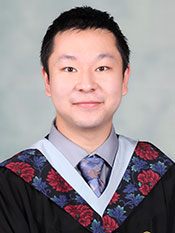Program Information
Development of a Computerized 4D MRI Phantom for Liver Motion Study
C Wang*, F Yin , P Segars , Z Chang , L Ren , Duke University Medical Center, Durham, NC
Presentations
SU-K-708-6 (Sunday, July 30, 2017) 4:00 PM - 6:00 PM Room: 708
Purpose: To develop a 4D computerized MRI phantom with image textures extracted from real patient scans for liver motion studies.
Methods: The proposed phantom was developed based on the current version of 4D extended-cardiac-torso (XCAT) computerized phantom and a clinical MR scan. Initially, the XCAT phantom was voxelized in abdominal-chest region at the end-of-exhalation phase. Structures/tissues were classified into four categories: I. Seven key textured organs, including liver, gallbladder, spleen, stomach, heart, kidneys and pancreas, were mapped from a clinical T1w liver MR scan using deformable registration; II. Large textured soft tissue volumes were simulated via an iterative pattern generation method using the same MR scan; III. Lung and intestine structures were generated by assigning uniform intensity with proper noise modelling; IV. Bony structures were generated by assigning the MR values. A spherical hypo-intensity tumor was inserted into the liver. Other respiratory phases of the 4D phantom were generated using the backward deformation vector fields exported by the XCAT program except that bony structures were generated separately for each phase. A weighted image filtering process was utilized to improve the overall tissue smoothness at each phase.
Results: Three 4D series with different motion amplitudes were generated. The developed motion phantom produced good illustrations of abdominal-chest region with anatomical structures in key organs and texture patterns in large soft tissue volumes. In a standard series, the tumor volume was measured as 13.90±0.11cc in a respiratory cycle, and the tumor’s maximum center-of-mass-shift was 2.95cm/1.84cm on SI/AP directions. The organs motion during the respiratory cycle was well rendered. The developed motion phantom has the flexibility of motion pattern variation, organ geometry variation and tumor modelling variation.
Conclusion: A 4D computerized phantom was developed and could be used to produce image series with synthetic MR textures for MR imaging research of liver motion.
Contact Email:
